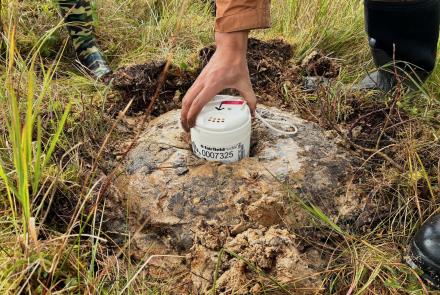Natural Gas and the Common Car
About every three months, I have to dig our hundred-pound propane tank out of the snow, leaves, or whatever, and haul it to the distributor to have it filled.
We use propane for cooking only, but have also found the oven to be an excellent source of emergency heating when the power goes off. It is also relatively economical, except in terms of back strain incurred while changing the tank.
Now that the issue of the natural gas pipeline from Prudhoe Bay is being batted about, propane users ponder whether they can use natural gas in a propane stove. Sure they can, with minor adjustments to the stove--propane is one part of natural gas. But just what IS natural gas anyway?
Believe it or not, more than a third of the energy consumed in the United States is provided by natural gas. Natural gas almost always occurs in association with petroleum, because they are both products of the decay of ancient animal and vegetable matter after the heating and compression due to burial.
The stuff that we see burning off at wellheads in Cook Inlet and at Prudhoe Bay is a mixture of several gases. The ones that usually concern us are methane, butane and propane (there are several other "anes" thrown in). Before this mixture can be effectively transmitted in pipelines and used at the point of distribution, the heavy hydrocarbon gases, butane and propane, are extracted as liquids by processes including cooling. The remaining so-called "dry" gas is primarily methane, which constitutes the bulk of the natural gas that flows in our pipelines.
Methane is an ideal fuel product that we will probably be seeing much more of in the future. We may even be running our cars on it by the end of the century.
A recent editorial in Science magazine points out several advantages to using methane as a fuel. Lubricating oil is not diluted with it as it is with gasoline, and engine wear is reduced correspondingly. Exhaust gases are relatively non-polluting. An engine designed specifically for methane is more energy-efficient than a gasoline engine, and perhaps most important to northerners, the startup of methane-burning motors is not affected by cold weather (except of course, there will always be stiff crankcase oil at -40°F).
There would be other factors that must be taken into account. Because methane must be stored under high pressure, the steel tank necessary to contain it would add about ten percent to the weight of a car. Even though methane must be kept at a pressure of 160 to 200 atmospheres, this potential bomb would probably pose less of a threat during a collision than a ruptured gasoline tank.
The cost of gasoline per unit of energy is now about twice that of methane. If natural gas does come to Alaska, wouldn't it be nice to drive home at night, plug your fuel tank into a spigot on the outside of the house and fill 'er up? The rub here, of course, is that somehow you would have to rig the spigot to a compressor raising the pressure to 200 atmospheres--no mean feat.



